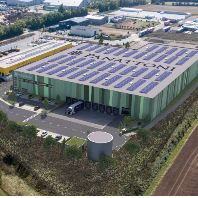According to the Financial Times, ING has won the race to buy more than £1.2bn of properties from Abbey National in what is believed to be the biggest portfolio sale in the UK.
Financial Times says on its website that it is understood that the decision was made late on Thursday. An announcement may come as early as this week.
Abbey considered more than 30 bids after appointing agents CB Richard Ellis to sell the properties of its closed with-profits subsidiaries, Scottish Mutual and Scottish Provident.
First-round bidders included Nomura, Morgan Stanley, Vincent Tchenguiz, GE Capital, Goldman Sachs, the Reuben brothers and Insight Investment, part of HBOS.
The high level of interest reflected the frenzy of institutions and entrepreneurs trying to put money in commercial property. However, the final price tag, understood to be £1.22bn, is lower than initial estimates that the portfolio could sell for £1.4bn or more.
This may reflect concerns that the deal could represent the high water mark of the property investment boom. Abbey National, now owned by Spain's Banco Santander, has freely admitted that it was calling the "choppy" market.
ING and its partner, JPMorgan, are believed to have bought at an initial yield of 6.1%, higher than the average for UK commercial property.
Morley Fund Management with Anglo Irish Bank dropped out a few days ago, leaving three bidders in the last round: ING; Prudential with RBS and Goldman Sachs; and a consortium of entrepreneurs Tom Hunter and Nick Leslau, US group Apollo Real Estate, REIT Asset Management and HBOS.
ING is expected to sell off some of the properties, although most will end up in its funds. The portfolio consists of 128 buildings across the UK, ranging from retail warehouses, industrial units, regional offices, high street shops and distribution outlets, with an annual rent of £75m.
Separately, Abbey yesterday sold 12 Irish properties worth about £84m from the Scottish Provident portfolio to a private Irish buyer.
Source: Financial Times






